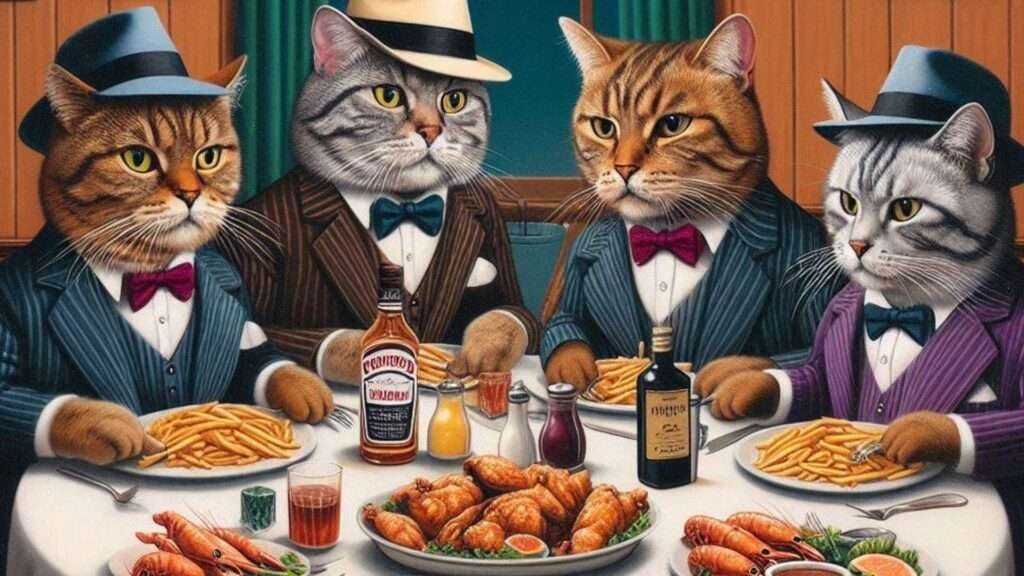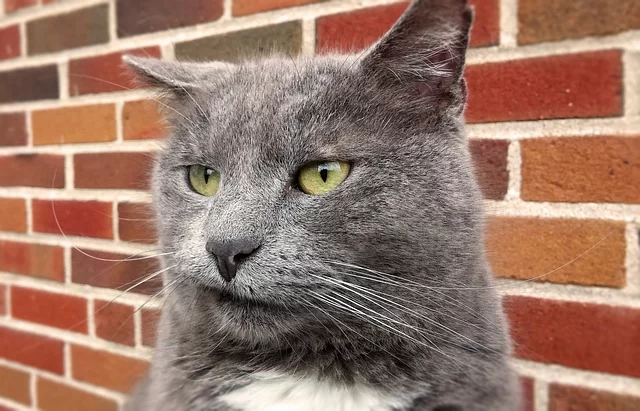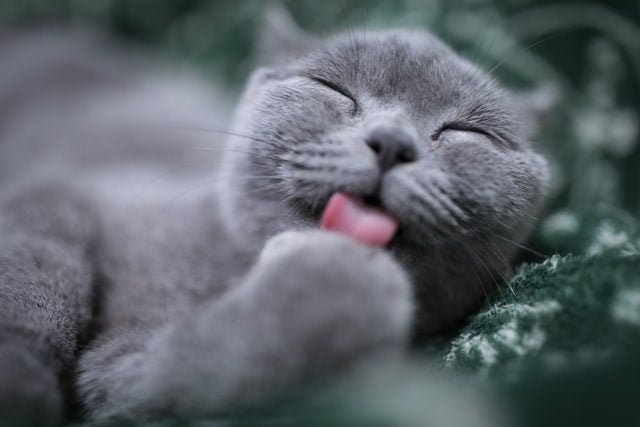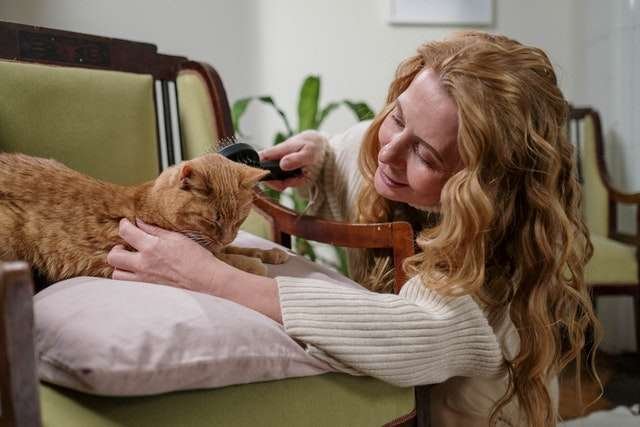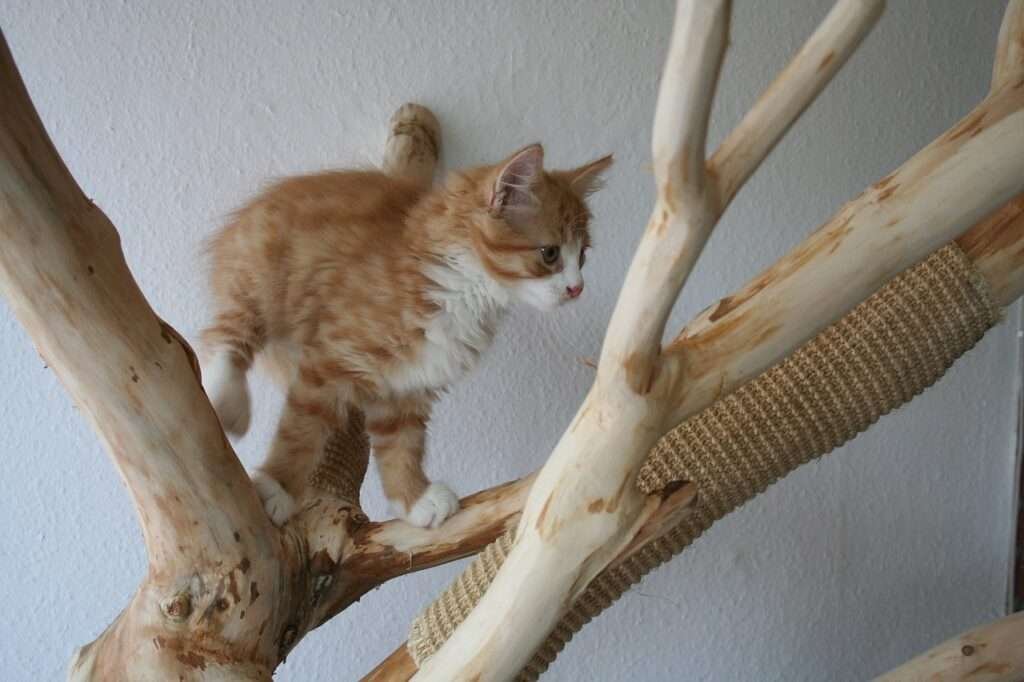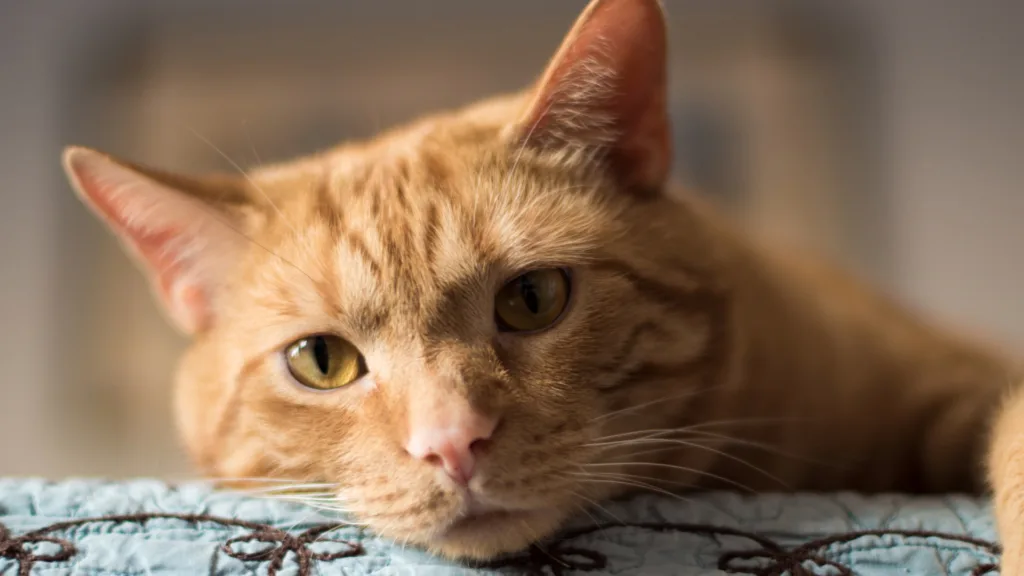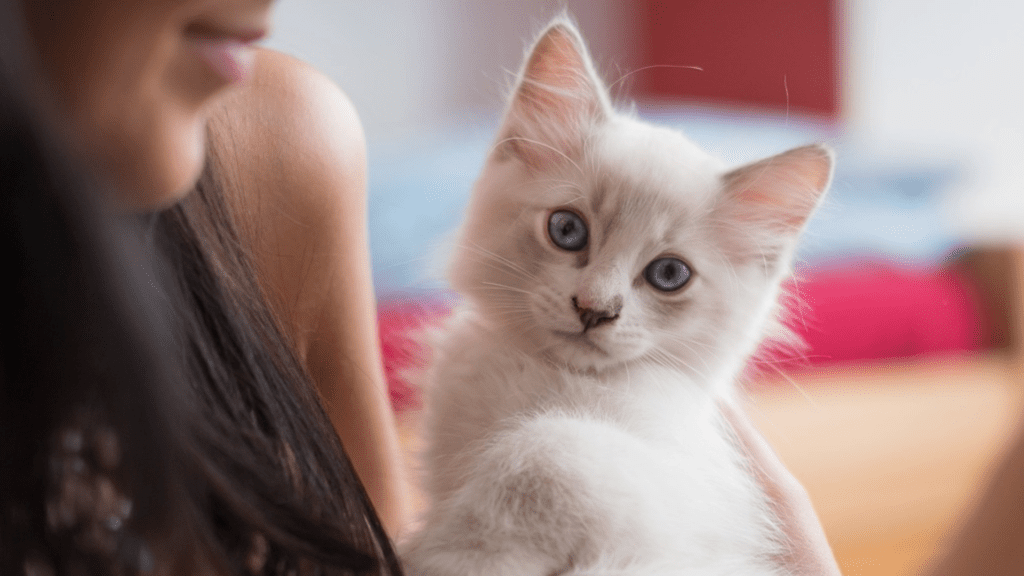Selecting Quality Cat Food for Our Feline Friends.
One of the most crucial choices you’ll make for the health of your little feline friends is selecting the proper cat food.
Because it directly affects their health, vitality, and longevity, premium cat food (although a little more expensive) is pretty important.
I’ll be attempting to go through some of the more important things to take into account when choosing the best cat food for your cherished kitty’s over the course of this article.
The first step in making sure your kittens and cats receive the nutrients they need is for us to know what to look for in cat food.
When choosing a quality cat food that is right for your feline, you will need to take into account a number of factors, such as life stage, nutritional sufficiency, ingredients, certifications, and reliable brands.
It can be very confusing to navigate the wide range of options available on the market, regardless of how much experience you have with cats.
Grain-free to organic, dry kibble to wet canned food, the choices are seemingly endless.
However, you must make sure that the food you give your cats satisfies their nutritional needs by being picky and knowledgeable.
We will look at the specifics of choosing premium cat food in this extensive guide. We’ll look at the nutritional requirements of various life stages, assess the benefits of different ingredients, and stress the significance of certifications that guarantee the safety and quality of food.
We will also present a few respectable companies that are well-known for manufacturing premium cat food.
I hope that after reading this post, you will have a little more knowledge to help you make an informed choice and make sure your feline friends eat a diet that supports their general well-being.
Understanding Life Stages and Nutritional Adequacy.
When selecting the best cat food for your furry friends, it’s important to consider their life stages and make sure the food is sufficiently nutritious.
As cats mature from kittens to adults and, eventually, to senior cats, their dietary needs change. Formulations tailored to specific life stages support general health, growth, and maintenance, which helps address these shifting needs.
For example, a diet rich in protein, fats, and vital nutrients is necessary for kittens to support their rapid growth and development.
Foods specifically made for kittens are made with more calories and the right amounts of all the nutrients, including calcium and phosphorus, which are vital for healthy bones and teeth.
In young cats, the proper development of the brain and vision also depends on the omega-3 fatty acid DHA.
Cats need different nutrition for maintenance once they reach adulthood. The goal of adult cat food is to provide a balanced diet that supports lean muscle mass, a healthy weight, and general wellbeing.
These formulations typically contain all the necessary vitamins and minerals in the proper proportions for protein, fats, and carbohydrates.
Whether your cat is an indoor or outdoor cat, it is crucial to select a high-quality product that fits their lifestyle because your cat’s activity level can affect what they need to eat.
Cats who are seven years of age or older require different diets than younger cats. For cats that are getting older, diets high in protein to maintain muscle mass and low in calories to avoid obesity may be helpful.
Moreover, antioxidants to strengthen the immune system and supplements like glucosamine and chondroitin to support joint health are commonly found in senior cat food.
Understanding cat food labels requires an understanding of the concept of nutritional adequacy. As we eventually discover, a nutritionally adequate diet is one that includes all of the essential nutrients in the right amounts for a given life stage.
Making the choice of cat food that satisfies the highest requirements guarantees that your pet will be fed a diet that promotes health throughout their entire life.
What Are Some Of The Key Ingredients We Need To Look For?
Knowing what ingredients are necessary in cat food can make a big difference in their general health.
Particular nutrients and ingredients that meet cats’ nutritional needs should be prominently featured in high-quality cat food.
Among these, top-notch proteins are crucial since they form the basis of any diet that is good for cats. Not only are proteins from real meat, poultry, or fish easier to digest, but they also support the maintenance of lean muscle mass and general vigour.
Because they give you energy and maintain the health of your coat, healthy fats are also essential. Particularly, the fatty acids omega-3 and omega-6 play significant roles.
Omega-3 fatty acids, which are frequently present in fish oil, have anti-inflammatory and developmental benefits for the brain and eyes.
Omega-6 fatty acids, which are typically derived from poultry fat or plant oils, are required for healthy skin and a glossy coat.
Vitamins and minerals are also essential to a healthy diet. Vitamins A, D, E, and B-complex are essential for many bodily functions, including vision, bone health, and metabolic processes.
Minerals such as calcium, phosphorus, and potassium promote bone health, muscle function, and cellular activity. Taurine, an amino acid found only in animal tissues, is another essential ingredient.
Cats cannot synthesise taurine and must get it from their diet to avoid heart and vision problems.
Moisture content is another important factor, particularly for urinary tract health. Wet cat food, or a combination of wet and dry food, can help maintain adequate hydration, which is critical for preventing urinary tract infections and kidney problems.
Reading ingredient lists carefully can help you identify healthy food sources. Look for foods with real meat as the first ingredient and avoid those with a lot of fillers, such as corn or wheat.
By focusing on these key ingredients and understanding their roles, you can make an informed decision and provide your cat with a nutritious diet that promotes health and longevity.
Are There Any Ingredients We Should Avoid?
When selecting the best cat food for your feline companion, pay close attention to the ingredients listed on the packaging.
Not all ingredients are beneficial; some may be harmful to your cat’s health. Understanding which ingredients to avoid can help keep your cat’s diet nutritious and safe.
I was a little shocked to learn that there are artificial preservatives like BHA, BHT, and ethoxyquin widely used to extend the shelf life of cat food and that these chemicals have been linked to a number of health issues, including liver and kidney damage, as well as cancer. It’s just terrible that we need to be looking for these things, it just should not happen.
So, we obviously need to select cat foods that contain natural preservatives such as tocopherols (vitamin E) or ascorbic acid (vitamin C).
Artificial colours and flavours are another type of ingredient to avoid. These additives have no nutritional value and are often used to make food more appealing to humans.
However, they can cause allergic reactions and other health issues in cats. Look for cat food that uses natural ingredients to add flavour and colour.
Fillers like corn, wheat, and soy are commonly used in cat food to bulk it up cheaply. These ingredients are low in nutrients and can trigger allergies and digestive problems.
Since cats are obligate carnivores, meat makes up the majority of their diet. Instead of fillers, a particular animal protein, like chicken or salmon, will be the first ingredient in high-quality cat food.
Pay close attention to the labels on cat food products to steer clear of these dangerous ingredients. Choose foods that are free of grains and artificial colouring, flavouring, and preservatives.
To obtain tailored advice regarding the particular health needs of your feline, speak with your veterinarian.
Knowing about these potentially dangerous ingredients will help you make decisions that are best for your cat’s general health and wellbeing.
Purchasing premium cat food can improve the health and happiness of your kitty buddy.
Certifications and Quality Standards We Should Learn About.
Selecting the best cat food for your feline companion can be made easier if you are aware of certifications and quality standards.
These certifications are widely regarded as a trustworthy sign of the product’s safety and nutritional suitability.
It is highly likely that every nation will have a group, association, or official government agency that oversees or provides guidance on pet food safety.
These organisations may or may not conduct in-person testing or approve pet food; however, they will at the very least set rules that producers must adhere to in order to guarantee that their goods fulfil fundamental nutritional requirements.
Look for statements on cat food labels that indicate that the product has undergone rigors feeding trials or has been formulated to meet established nutrient profiles.
For example, a “complete and balanced” food has been formulated to include all of the essential nutrients required for a cat’s specific life stage, such as kitten, adult, or senior.
This gives you confidence that the food you feed your cat will benefit their overall health and well-being.
In addition to pet food governance organisation statements, other quality marks and certifications can also guide your decision.
For example, the Global Animal Partnership (GAP) certification focuses on higher welfare standards in the farming practices of the animals used in pet food.
Similarly, a country’s chemical regulators may be able to provide a seal indicating that the ingredients used were grown without synthetic pesticides or fertilisers, adding an additional layer of quality assurance.
Furthermore, look for ISO (International Organisation for Standardisation) certifications, which demonstrate that the manufacturing processes meet high international quality and safety standards.
Some brands may also carry the Non-GMO Project Verified seal, indicating that the product is free of genetically modified organisms.
Paying attention to these certifications and quality standards allows you to make more informed decisions about the cat food you purchase.
It ensures that your feline companion’s meals are not only delicious, but also nutritious and safe, benefiting their long-term health and happiness.
What Are Some Reputable Cat Food Brands To Be On The Lookout For?
Sticking to reliable brands when selecting high-quality cat food for our cats is a crucial step in guaranteeing optimal nutrition.
Reputable companies routinely spend money on R&D to produce safe, wholesome, and well-balanced cat food.
Here, we examine a few well-known cat food companies that have continuously shown that they are dedicated to quality and offer a range of choices to accommodate various dietary requirements and tastes.
One of the most reputable brands in the industry is Hill’s Science Diet. Renowned for its scientifically formulated recipes, Hill’s Science Diet offers a wide array of products catered to varying life stages, medical conditions, and dietary requirements.
Whether your cat needs a sensitive stomach formula, dental care, or weight control, Hill’s Science Diet provides premium, vet-approved options.
Royal Canin is another popular brand that emphasises tailored nutrition based on the unique needs of different cat breeds and life stages.
Royal Canin’s breed-specific formulas are especially noteworthy, addressing the unique health concerns and nutritional requirements of breeds such as the Maine Coon, Siamese, and Persian cats.
Furthermore, Royal Canin provides specialised diets for cats with medical conditions such as urinary problems or gastrointestinal sensitivities.
Blue Buffalo takes pride in using only natural ingredients with no artificial preservatives, colours, or flavours.
Their product lines, such as Blue Wilderness and Blue Basics, cater to cats of various dietary preferences, including grain-free and limited-ingredient diets. Blue Buffalo’s dedication to high-quality, natural nutrition has made it a popular choice for kitty parents.
Wellness Complete Health and Wellness Core are also well known for their holistic approach to feline nutrition.
Wellness Complete Health emphasises nutrient-rich, balanced diets for overall well-being, whereas Wellness Core provides protein-rich, grain-free options that appeal to cats with higher protein requirements.
Purina Pro Plan excels due to its focus on advanced nutrition, which is backed by a plethora of research. Cats of all life stages and health conditions can benefit from Purina Pro Plan’s customised nutrition solutions, which include choices for indoor cats, senior cats, and cats with particular dietary requirements.
You can be sure that you are giving your feline friends the premium nutrition they need to flourish when you choose cat food from these respected brands.
Always ask your veterinarian about the ideal diet choices for the unique requirements of your cat.
When introducing a new food to your cat, you need to be patient and carefully plan so that their digestive system adjusts to it.
Gastrointestinal distress, including vomiting, diarrhoea, and appetite loss, can result from abrupt dietary changes.
Below is a step-by-step guide to make the transition as smooth as possible.
Step-by-Step Guide to Transitioning Your Cat’s Food.
1. Gradual Introduction: Begin by combining a small amount of the new cat food with your cat’s existing food.
a. Initially, aim for a ratio of approximately 75% old food to 25% new food.
b. This allows your cat to adjust to the new taste and texture without straining their digestive system.
2. Incremental Increase: Over the next 7-10 days, gradually increase the proportion of new food while decreasing the amount of old food.
a. By the fourth day, the ratio should be 50/50 old and new food.
b. By the seventh day, the ratio should be approximately 25% old food to 75% new food.
c. Finally, by the tenth day, your cat should be exclusively eating the new food.
3. Monitoring Reactions: During the transition period, keep a close eye on your cat for any signs of trouble.
a. Symptoms such as vomiting, diarrhoea, and appetite changes should be monitored.
b. If any of these occur, slow down the transition by keeping the current ratio for a few more days before increasing the new food again.
4. Maintain Consistency: Consistency is essential for a successful transition.
a. Feed your cat at consistent times each day and avoid giving treats or table scraps that could upset their digestive system.
5. Hydration: Ensure that your cat drinks plenty of water during the transition.
a. Proper hydration promotes digestion and helps to alleviate potential digestive upsets.
6. Patience and Reassurance: Some cats may take longer to adapt to new foods than others.
a. Be patient and provide reassurance with gentle encouragement.
b. Avoid forcing your cat to eat new foods, as this can lead to negative associations with mealtime.
Following these guidelines will help ensure a smooth transition to new cat food, reducing stress and digestive issues for your feline friend.
A gradual and monitored approach will improve your cat’s overall health and satisfaction with their new diet.
What’s My Conclusion?
It’s important to be thorough and knowledgeable about your cat’s health and welfare when selecting food.
You can customise your cat’s diet for growth, maintenance, or senior years by being aware of their needs based on their life stage.
Making the proper ingredient selections guarantees that your cat receives the nutrients it requires without any harmful or needless fillers.
For the long-term health of your cat, it’s also imperative to stay away from dangerous additives and preservatives.
You can help guarantee that your cat is receiving the best nutrition possible by selecting trustworthy brands that are recognised for their excellence and openness.
Making premium cat food a priority enhances your cat’s general well-being, vitality, and lifespan.
Lastly, choosing your cat’s food wisely necessitates a trifecta of awareness, caution, and care.
Keeping an eye on these crucial areas will enable your feline friend to flourish and lead a long, active life.
To make the best dietary choices for your cat, always ask your veterinarian for personalised advice and keep up with the latest nutritional recommendations.

